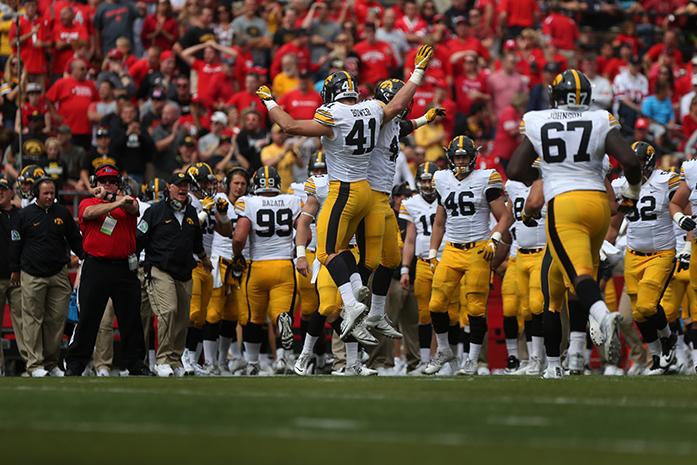By Blake Dowson | [email protected]
The Iowa football team is 3-1 and still controls its destiny as far as winning the Big Ten West, something the team has aspirations to do.
But the product the Hawkeyes have put on the field the last two weeks has made Iowa fans sit on the edge of their seats for all the wrong reasons. The offensive and defensive lines have seemed pretty porous, and quarterback C.J. Beathard isn’t clicking with his receivers the way he did last year with a veteran 2015 receiving corps.
With all of that in mind, let’s look at some stats from the Rutgers game in particular and what they may mean for Iowa head coach Kirk Ferentz and his Hawkeyes.
Rutgers yards per carry — 3.6
The Scarlet Knight rushing attack is the perfect glass half-full or glass half-empty for Iowa fans. The 193 yards Rutgers gained on the ground is a big number, and it could be cause for alarm — for those glass-half-empty people.
For the glass-half-full fans, they note that it took Rutgers 53 rushing attempts to get to 193 for an average of 3.6 per rush. That number doesn’t look so bad; especially next to the 5.1 yards per carry the Hawkeyes averaged.
Iowa penalties — 7 for 57 yards
OK, this number is bad for the Hawkeyes no matter how it’s twisted. So often, Ferentz talks about how his teams have limited room for error in every one of its games.
That means giving up more than half a field in penalties over the course of a game can’t happen very often if the Hawkeyes want to win a lot of football games.
There is a reason Ferentz leans over and writes every penalty in a notebook — they kill momentum. Look no further than the first play of the second half, when LeShun Daniels Jr. found a hole and ran 75 yards for a touchdown. The refs tossed a flag and called it back.
The same thing happened against North Dakota State. Mistakes such as that can’t happen if the Hawkeyes want to get to Indianapolis. The offensive line grinds its opponents down and waits for the opportunity when the D-line wilts for one play. If they get caught holding on that one play, it’s bad news.
Punts downed inside the 20-yard line: 4
A Hawkeye wearing No. 16 affecting a game in a big way has been commonplace for Iowa since the beginning of 2015.
The difference in Piscataway was that the No. 16 doing the most damage was Iowa’s punter, Ron Coluzzi.
The Central Michigan transfer has arguably been the team’s MVP so far, filling a position of need for the Hawkeyes.
Coluzzi punted 7 times against Rutgers with a 42-yard average, downing four of the balls inside the 20-yard line and booting 2 punts more than 50 yards.
A big part of winning close ball games is winning little battles throughout the game, such as field position. Coluzzi has consistently won that battle this season.
George Kittle — 2 catches for 56 yards
The tight end is starting to heat up now after a slow start to the season. His play in the last two games has been noticeable and a welcome sight for Ferentz and the Hawkeyes, who expected the world of Kittle before the season started.
He had more than 100 yards receiving against North Dakota State (though in a losing effort) and gained another 56 yards against Rutgers, including a touchdown that opened the scoring in the second quarter.
The interesting thing about Kittle so far this season is how offensive coordinator Greg Davis is using him in the offense. Through four games, he is averaging 19.2 yards per reception — a lot for a tight end, especially in Iowa’s scheme, which typically uses tight ends in the short passing game. For reference, Henry Krieger-Coble averaged 11.2 yards per catch last season for Iowa.
Whether he’s catching 36-yard touchdowns or 5-yard hitch routes for a first down on third and 4, the Hawkeyes need Kittle to stay productive.



